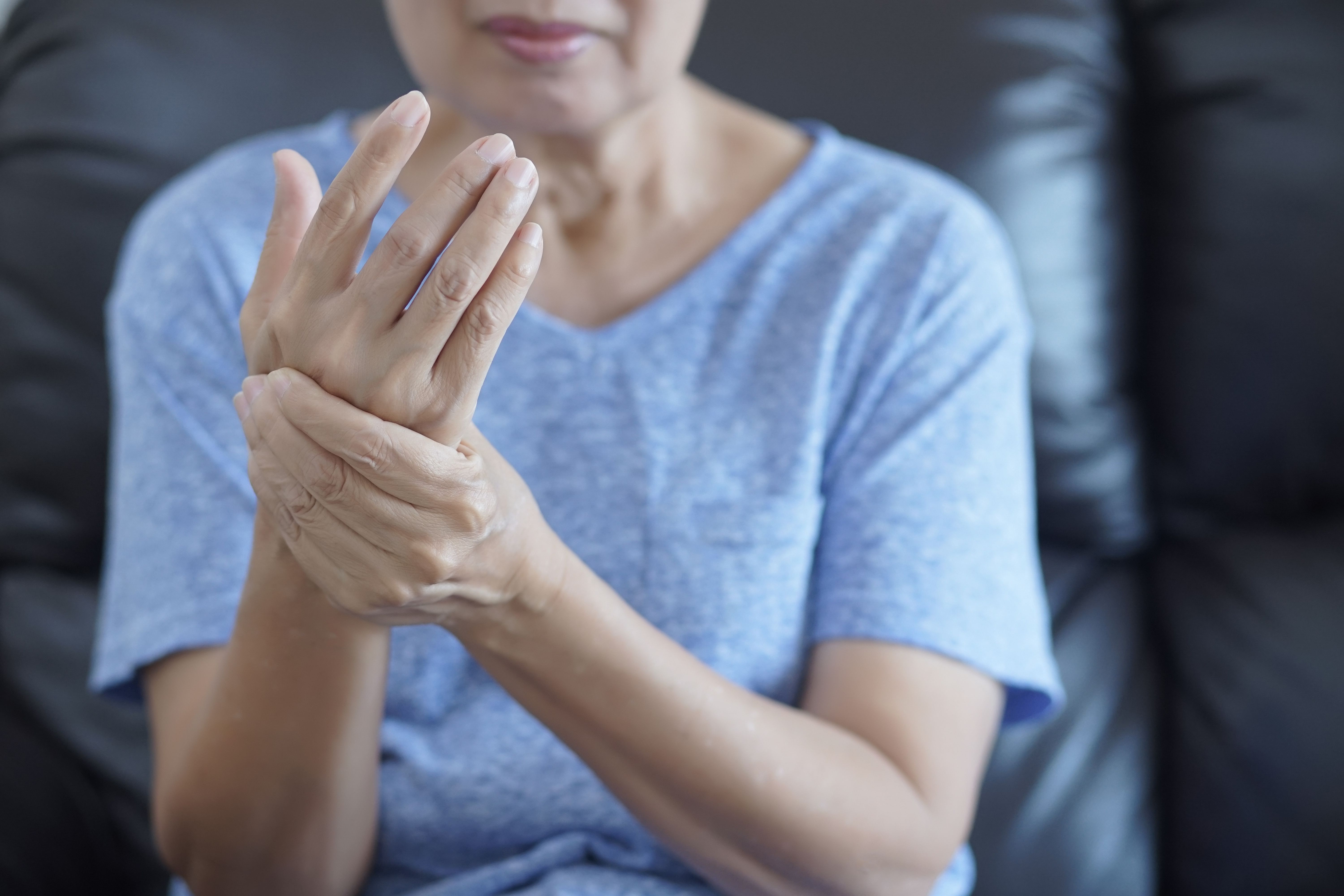Article
Active Conventional, Biological Therapy Show Similar RA Remission Rates
Author(s):
ACR Annual Meeting: A large proportion of patients with rheumatoid arthritis achieved remission with either active conventional therapy or with one of three different biologic therapies, certolizumab, abatacept and tocilizumab, after 24 weeks of treatment, according to a study presented at the annual meeting of the American College of Rheumatology in Atlanta on November 12.
(©AdiruchNaChiangmai, AdobeStock).

A large proportion of patients with rheumatoid arthritis achieved remission with either active conventional therapy or with one of three different biologic therapies, certolizumab, abatacept and tocilizumab, after 24 weeks of treatment, according to a study presented at the annual meeting of the American College of Rheumatology in Atlanta on November 12.
“The optimal first-line treatment of patients with early rheumatoid arthritis is yet to be established,” wrote the authors of the study, presented by Merete Lund Hetland, M.D., Ph.D., D.M.Sc., of DANBIO and Copenhagen Center for Arthritis Research in Denmark.
The primary aim of the phase 4 NORD-STAR trial was to compare the proportion of patients who achieved remission with active conventional therapy with three different biologic therapies, certolizumab, abatacept and tocilizumab, after 24 weeks of treatment. Secondary aims were to assess and compare other efficacy measures and safety.
The trial included 812 patients (age 54.3±14.7 years, 31.2 percent male, body mass index 26.2±5.1 kg/m2) with early rheumatoid arthritis (DAS28 5.0±1.1, 74.9 percent rheumatoid factor positive and 81.9 percent ACPA positive, median time since diagnosis seven [1-18] days). All patients received methotrexate (25 mg/week after one month) and were randomized to one of four treatment groups. The active conventional therapy group (n=200) were given either oral prednisolone (tapered from 20 mg/day to 5 mg/day in nine weeks); or sulphasalazine (2 g/day), hydroxychloroquine (35mg/kg/week) and mandatory intra-articular triamcinolone hexacetonide to a maximum of four swollen joints (≤80 mg/visit up to week 20). The second group (n=203) was prescribed certolizumab 200 mg every other week subcutaneous (400 mg at 0, 2 and 4 weeks). Group three (n=204) received abatacept 125 mg/week subcutaneous and group four (n=188) was prescribed tocilizumab 8mg/kg/4weeks intravenous or 162 mg/week subcutaneous. Intra-articular triamcinolone hexacetonide was allowed in all groups up to week 20. The primary outcome was clinical disease activity index remission (CDAI≤2.8) at week 24.
“High remission rates were found across all four treatment arms at 24 weeks. A higher clinical disease activity index remission rate was observed for abatacept versus active conventional therapy and for certolizumab, but not for tocilizumab,” the authors wrote.
Crude clinical disease activity index remission rates were 42 percent in the active conventional therapy group, 47.8 percent in the certolizumab group, 52.5 percent in the abatacept treated patients and 41 percent in those treated with tocilizumab. With active conventional therapy as the reference, the absolute difference in adjusted remission rate was 4 percent (95%CI: -5 to 13) for certolizumab, 9 percent (0.1 to 19) for abatacept, and -1 percent (-10 to 9) for tocilizumab.
“With the predefined 15 percent margin, active conventional therapy was non-inferior to certolizumab and tocilizumab, but not to abatacept,” the authors wrote.
The respective number of serious adverse events were 13, 20, 10 and 10 for active conventional therapy, certolizumab, abatacept, and tocilizumab, and the respective number of adverse events was 552, 530, 527, and 653.
“These results underscore the efficacy and safety of active conventional therapy based on methotrexate combined with glucocorticoids and may guide future treatment strategies for early RA,” the authors wrote.
REFERENCE
“L09 - A Multicenter Randomized Study in Early Rheumatoid Arthritis to Compare Active Conventional Therapy versus Three Biological Treatments: 24 Week Efficacy and Safety Results of the NORD-STAR Trial.” Merete Lund Hetland, M.D., Ph.D., D.M.Sc., 9 a.m., Tuesday, Nov. 12. 2019 ACR/ARP Annual Meeting, Atlanta




